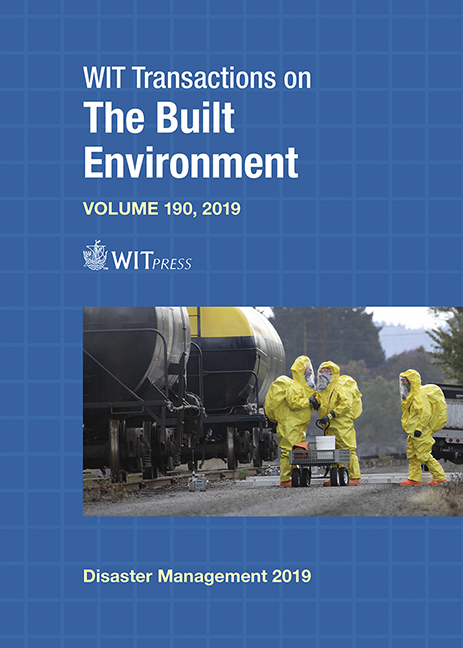STUDY OF THE INUNDATION ANALYSIS OF FLASH FLOODS IN URBAN AREAS FOR RAINFALL IMPACT FORECASTING
Price
Free (open access)
Transaction
Volume
190
Pages
12
Page Range
157 - 168
Published
2019
Size
921 kb
Paper DOI
10.2495/DMAN190141
Copyright
WIT Press
Author(s)
SUK HO LEE, DONG HO KANG, KYUNG SU CHU, BYUNG SIK KIM
Abstract
Due to climate change, changes in weather such as heavy rains and typhoons have caused various disasters. In addition, the scale of damage is also increasing, which requires quantitative analysis. The purpose of this study is to analyze the impact of rainfall in a specific area and to analyze the secondary damage caused by flash flooding during heavy rains and to use it in forecasting. In order to calculate the depth of flooding due to heavy rain, a rainfall depth of 0–300 mm is increased by 20 mm intervals to produce flooding depth data according to rainfall and, using this, the rainfall-immersion depth relationship curve was developed. Using the developed curve equation, the rainfall (limit rainfall) causing the specific submersion depth (10, 20, 50 cm) was calculated, and the rainfall flood forecasting was performed in the target area based on the calculated threshold rainfall. The target areas were divided into grids of 1 km × 1 km for the Sadangcheon basin, including the vicinity of Sadang Station, which was flooded due to heavy rains in 2011. The target of the second disaster was limited to urban flooding caused by flash floods in the Sadangcheon basin and model coupling techniques of the rainfall-leakage model (S-RAT) and the flood-campaign model (FLO-2D) were used to analyze urban flooding. The targets of the disaster were categorized into people, vehicles, and facilities, and the rainfall (threshold rainfall) that could cause damage to each target was calculated. In addition, the damage stage was divided into four stages by using the rainfall intensity (rainfall impact level). Based on the heavy rains that occurred in the Sadangcheon basin in July 2011, the results were compared with the forecast results due to the inundation status of the Sadang Station and the rainfall impact level.
Keywords
S-RAT, FLO-2D, coupling technique, threshold rainfall, heavy rain impact level




